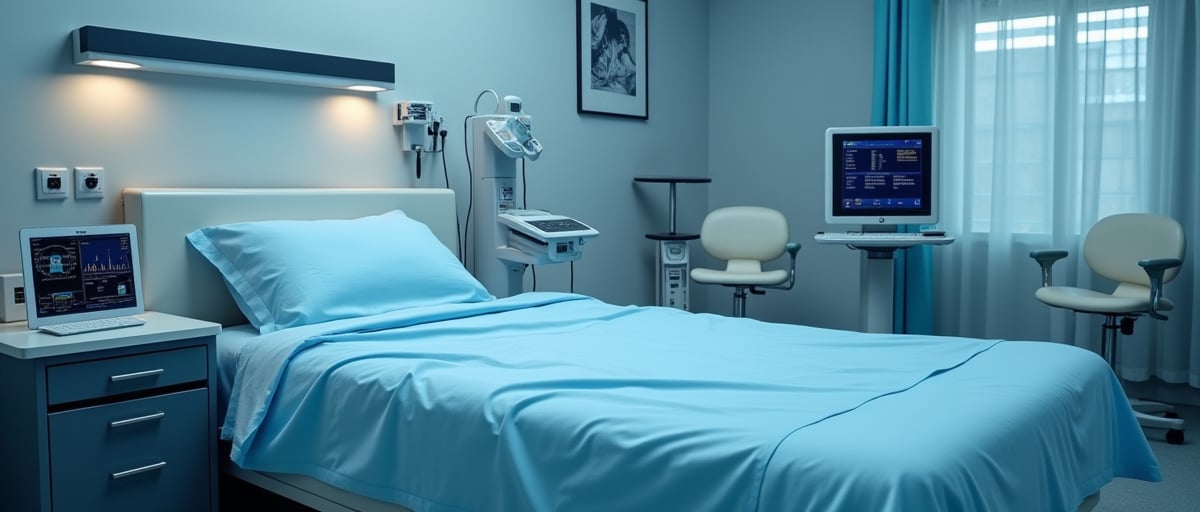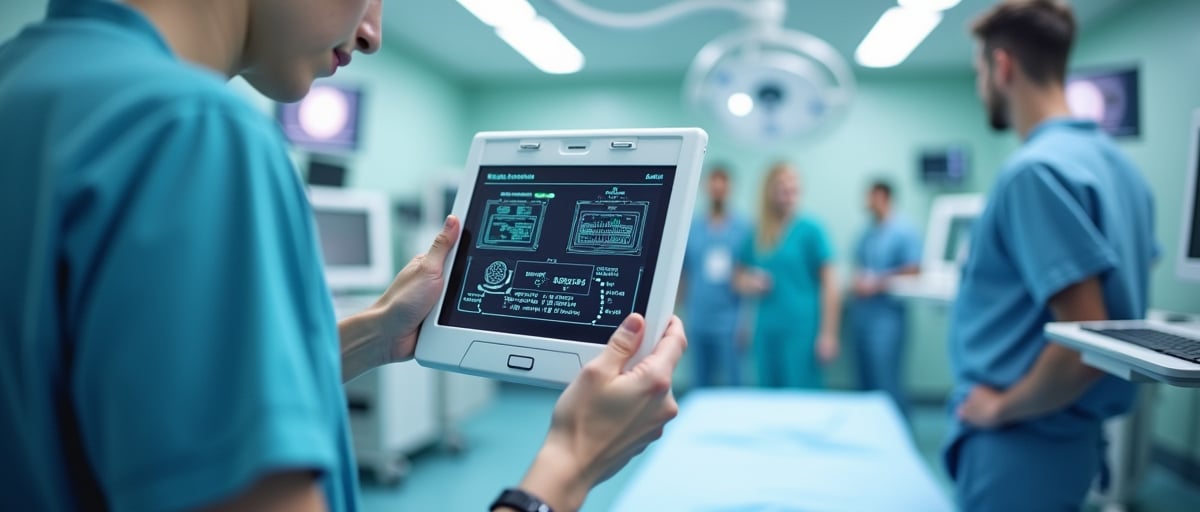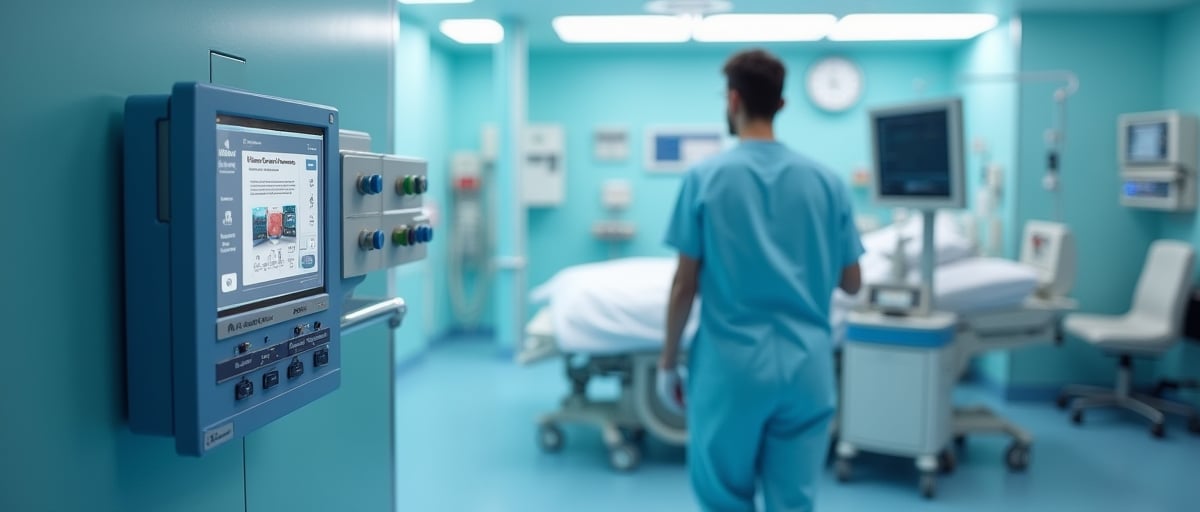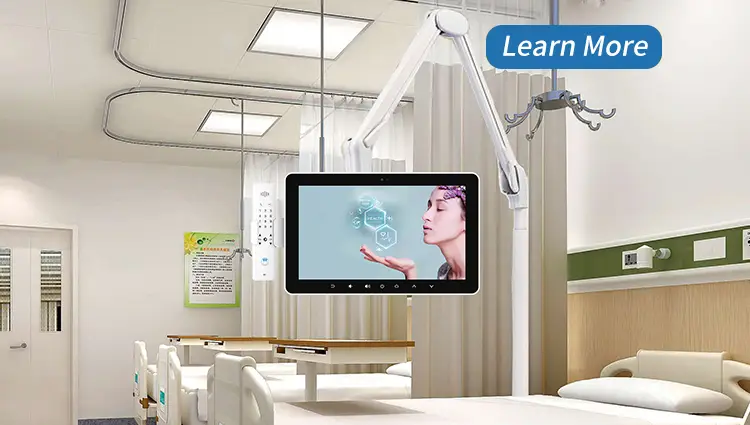- Healthcare Digitalization at the Patient Bedside
- Bedside Terminals in Rehabilitation: A Core Component of Patient-Centered Care
- Integration with Hospital Information Systems (HIS) and Electronic Health Records (EHR)
- Enhancing Patient Motivation and Engagement
- Remote Therapy and Tele-Rehabilitation Capabilities
- Data-Driven Rehabilitation and Clinical Decision Support
- Benefits for Healthcare Providers and Facilities
- Security and Compliance in Digital Rehabilitation Systems
- Future Outlook: AI and Personalized Rehabilitation Plans
- Conclusion

Healthcare Digitalization at the Patient Bedside
The digital transformation of healthcare is accelerating, and rehabilitation facilities are at the forefront of this change. Bedside terminals are no longer limited to entertainment or basic communication—they now serve as multifunctional digital platforms that enhance patient engagement, streamline clinical workflows, and support the integration of electronic health records (EHR). By embedding digital tools directly into the patient’s rehabilitation journey, hospitals and clinics are setting new standards for care quality and efficiency.
Bedside Terminals in Rehabilitation: A Core Component of Patient-Centered Care
Modern rehabilitation medicine emphasizes patient involvement, continuous monitoring, and tailored therapy plans. Bedside terminals empower patients by giving them access to personalized rehabilitation programs, teleconsultations, and real-time feedback. Clinicians benefit from faster data access and simplified documentation, ensuring that therapy outcomes are measurable and adaptable.
Key functions of rehabilitation bedside terminals include:
- Access to EHR and therapy plans for patients and clinicians.
- Interactive rehabilitation exercises designed for bedside use.
- Multimedia education content to improve patient knowledge and compliance.
- Video conferencing tools to connect patients with therapists or family.
- Secure messaging platforms for instant communication between staff and patients.
Integration with Hospital Information Systems (HIS) and Electronic Health Records (EHR)
Seamless connectivity is crucial in rehabilitation centers. Bedside terminals are integrated with HIS and EHR systems, ensuring all relevant data is synchronized. This connectivity provides physicians and nurses with up-to-date patient progress, while enabling therapists to adjust rehabilitation strategies in real time.
The result is a closed-loop digital ecosystem that links bedside care with overall hospital operations.

Enhancing Patient Motivation and Engagement
Rehabilitation outcomes depend heavily on patient participation. Digital bedside solutions employ gamification, interactive training modules, and visual progress tracking to keep patients motivated. For example, stroke rehabilitation patients can perform guided exercises using touch-screen prompts, with immediate visual feedback on performance.
These motivational tools not only improve compliance but also reduce recovery times and improve satisfaction rates.
Remote Therapy and Tele-Rehabilitation Capabilities
As healthcare shifts towards hybrid models, tele-rehabilitation is becoming essential. Bedside terminals allow patients to participate in virtual physiotherapy sessions, even when in isolation or recovering at home after discharge. This continuity of care bridges the gap between inpatient and outpatient rehabilitation, minimizing the risk of therapy disruption.
Data-Driven Rehabilitation and Clinical Decision Support
Digital bedside solutions generate a continuous stream of data. These insights help clinicians track mobility, cognitive improvement, and therapy adherence. Advanced analytics, powered by artificial intelligence (AI), can detect early signs of recovery stagnation or complications, enabling timely intervention.
Decision-support tools integrated within bedside systems guide therapists with evidence-based recommendations, reducing variability in care and enhancing treatment outcomes.

Benefits for Healthcare Providers and Facilities
Rehabilitation centers adopting bedside terminals gain:
- Improved workflow efficiency by reducing manual documentation.
- Higher patient throughput with structured and monitored therapy programs.
- Cost savings through reduced readmission rates and optimized staffing.
- Increased patient satisfaction with a transparent, engaging rehabilitation journey.
Security and Compliance in Digital Rehabilitation Systems
Since patient data is highly sensitive, bedside terminals in rehabilitation must adhere to stringent security standards such as GDPR and HIPAA. Secure login systems, encrypted communication, and role-based access ensure that patient information remains protected while being easily accessible to authorized staff.
Future Outlook: AI and Personalized Rehabilitation Plans
The future of bedside terminals in rehabilitation lies in personalization. AI-driven rehabilitation assistants will create adaptive therapy programs based on patient progress, medical history, and predictive analytics. Virtual reality (VR) integration may also become standard, allowing immersive rehabilitation exercises that simulate real-world scenarios for mobility and cognitive training.

Conclusion
Bedside terminals are redefining rehabilitation by merging patient engagement, clinical efficiency, and digital integration. As hospitals and rehabilitation centers invest in digital health infrastructure, these systems will become indispensable tools for recovery, offering patients not only entertainment and communication but also active participation in their healing journey.


